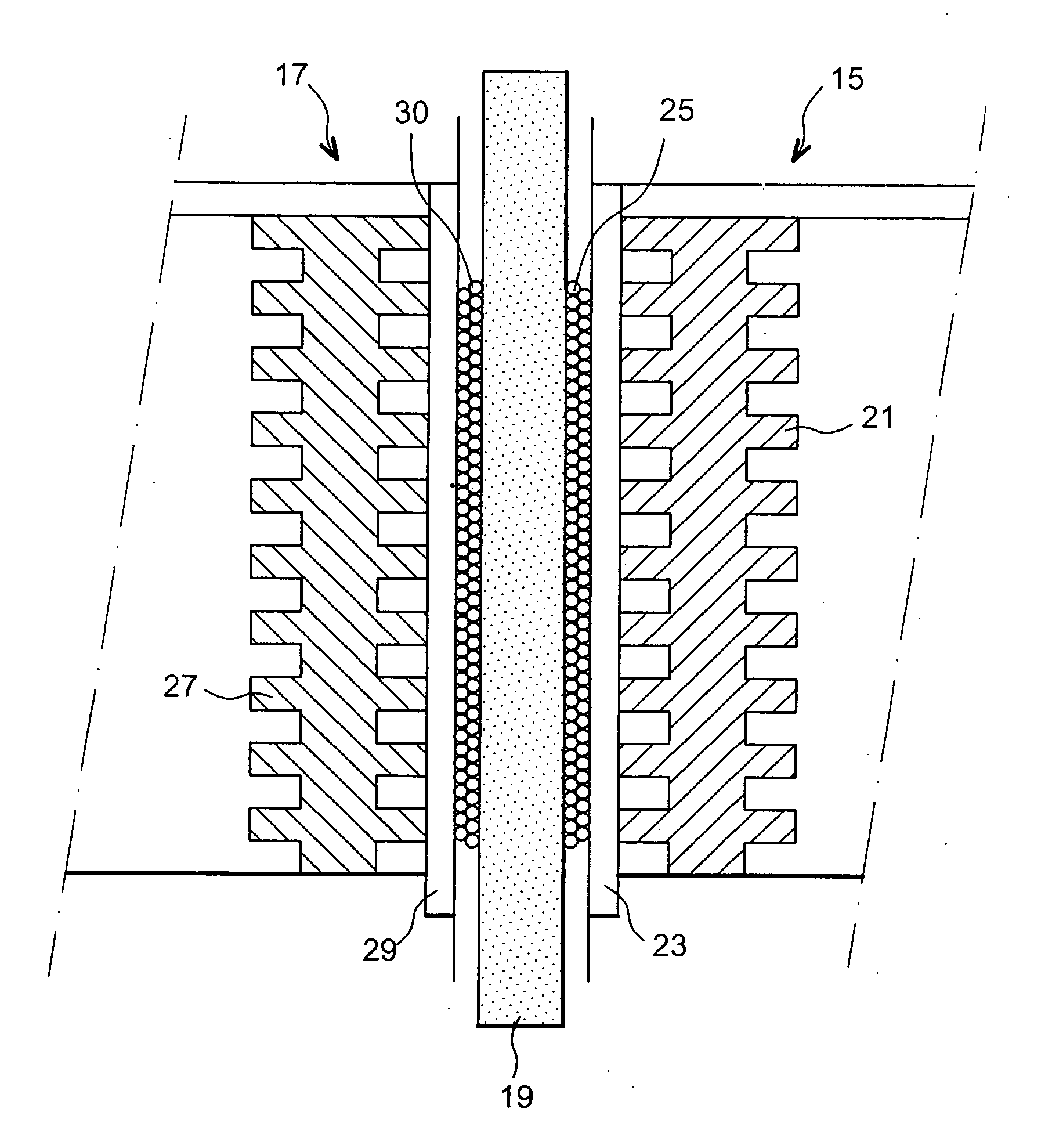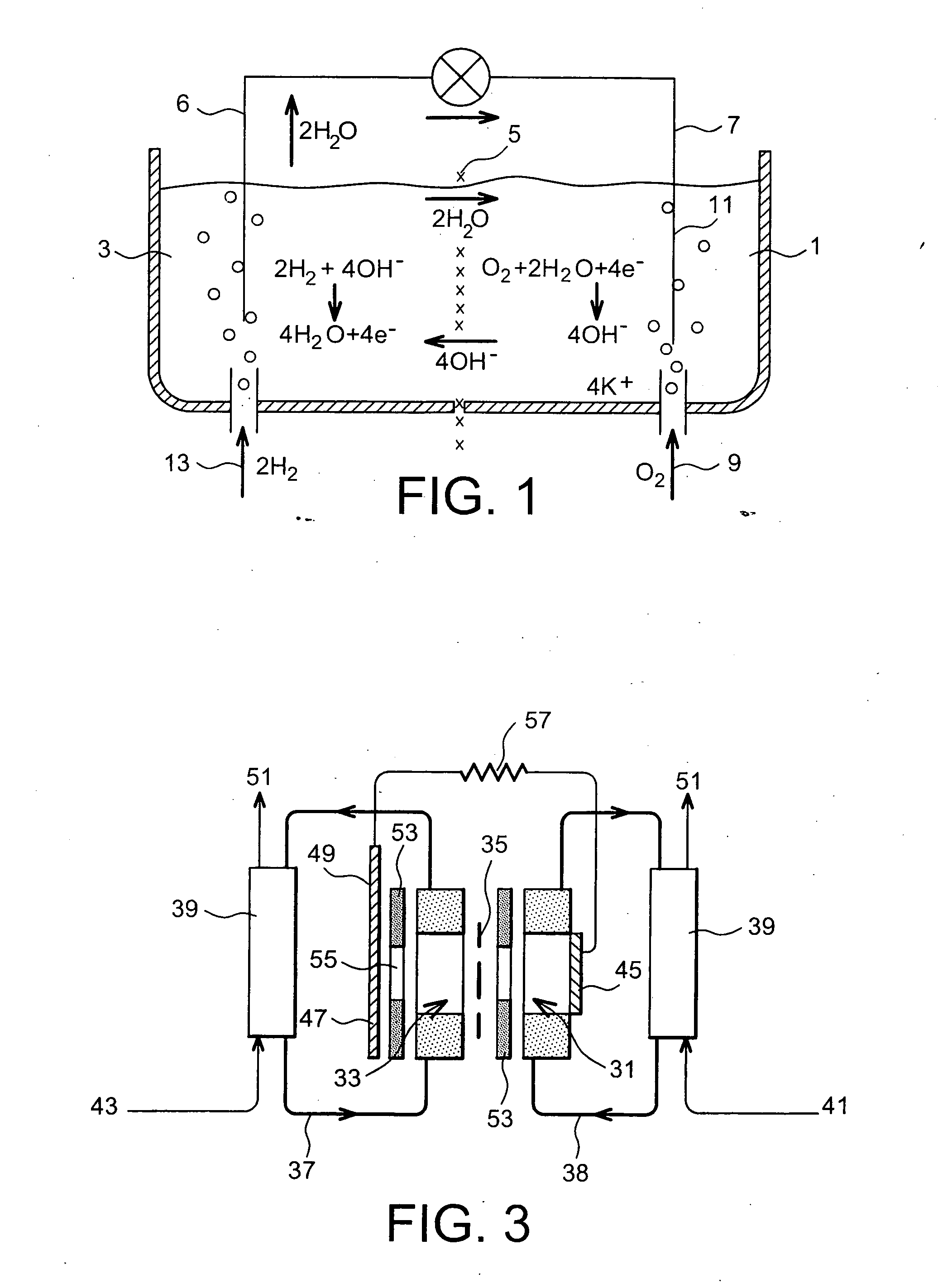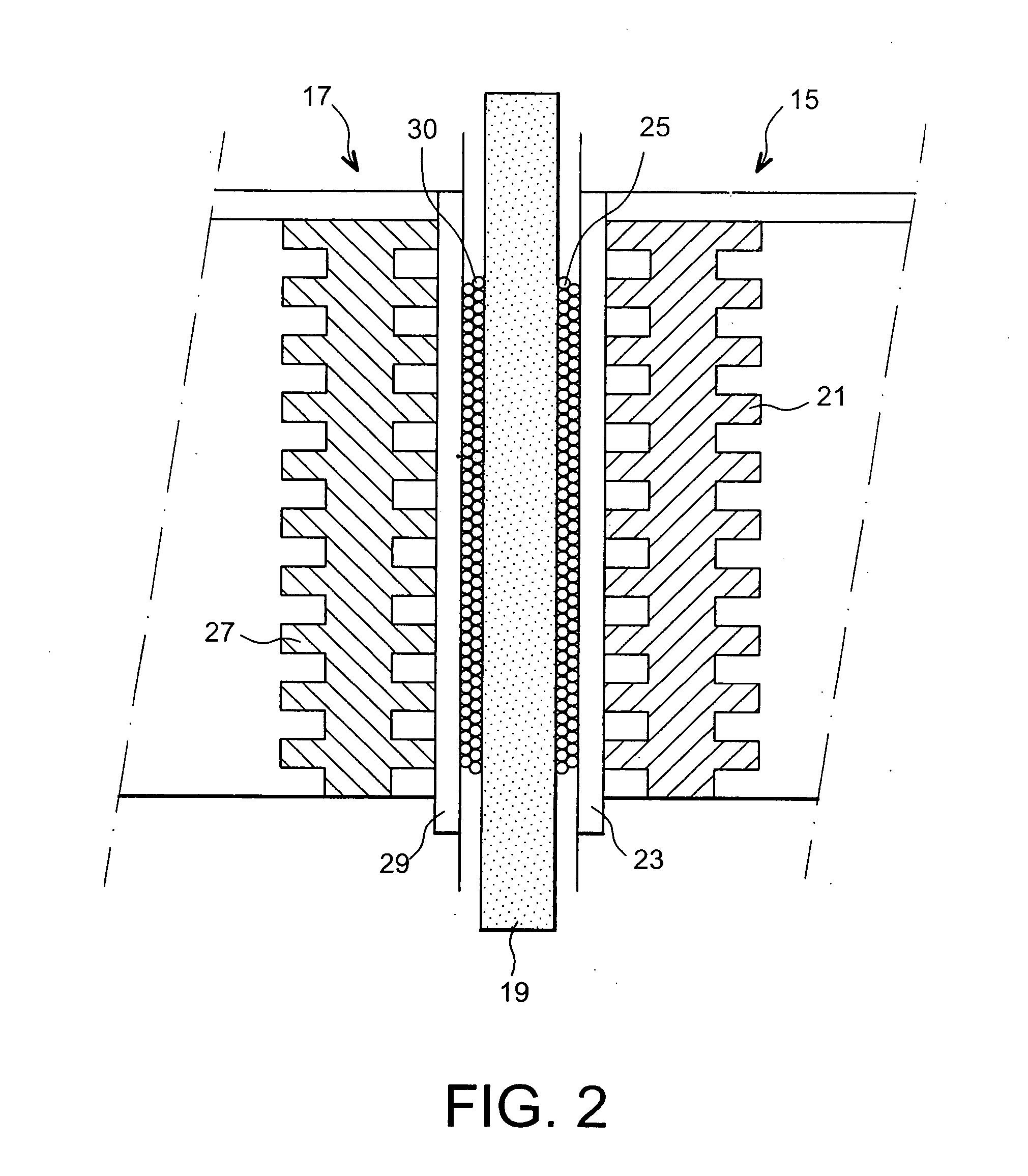Fuel cell using biofilms as catalyst for the cathode reaction an/or the anode reaction
a fuel cell and biofilm technology, applied in the field of fuel cell electrode treatment, can solve the problems of low efficiency, cell start-up difficulties, pollution problems inherent in the use of this type of catalyst, etc., and achieve the effect of improving the catalysis reaction
- Summary
- Abstract
- Description
- Claims
- Application Information
AI Technical Summary
Benefits of technology
Problems solved by technology
Method used
Image
Examples
example 2
[0093] The characteristics of the first series of tests were the following: [0094] polarization potential: −0.10 V / SCE; [0095] polarization time: 15 days; [0096] fluid circulating on the cathode side: seawater; [0097] fluid circulating on the anode side: distilled water+NaOH (pH=12.5); [0098] working area of the cathode: 9 cm2.
[0099] The current values recorded as a function of time were identical to those shown in Example 1.
[0100] In this first series of tests, the power delivered by the cell was measured for various electrical resistance values.
[0101] In a second series of tests, the power delivered by the cell was measured for various electrical resistance values, the cell not having a biofilm on the cathode and not having undergone the conditioning step.
[0102] The (power with biofilm / power without biofilm) ratios are given in Table 3 below.
TABLE 3Resistance (in Ω)1101001000104105106Ratio868181103—24—
example 3
[0103] The characteristics of the first series of tests were the following: [0104] polarization potential: −0.30 V / SCE; [0105] polarization time: 17 days; [0106] fluid circulating on the cathode side: seawater; [0107] fluid circulating on the anode side: distilled water+NaOH (pH base=12.5); [0108] working area of the cathode: 1.8 cm2.
[0109] In this first series of tests, the power delivered by the cell was measured for various electrical resistance values.
[0110] In a second series of tests, the power delivered by the cell was measured for various electrical resistance values, the cell not having a biofilm on the cathode and not having undergone the conditioning step.
[0111] The (power with biofilm / power without biofilm) ratios is are given in Table 4 below.
TABLE 4Resistance (in Ω)1101001000104105106Ratio798584511054
[0112] It may be seen that, for the three examples, the presence of a biofilm deposited on at least part of the surface of the cathode before it is placed in the cell...
PUM
| Property | Measurement | Unit |
|---|---|---|
| time | aaaaa | aaaaa |
| temperatures | aaaaa | aaaaa |
| temperature | aaaaa | aaaaa |
Abstract
Description
Claims
Application Information
 Login to View More
Login to View More - R&D
- Intellectual Property
- Life Sciences
- Materials
- Tech Scout
- Unparalleled Data Quality
- Higher Quality Content
- 60% Fewer Hallucinations
Browse by: Latest US Patents, China's latest patents, Technical Efficacy Thesaurus, Application Domain, Technology Topic, Popular Technical Reports.
© 2025 PatSnap. All rights reserved.Legal|Privacy policy|Modern Slavery Act Transparency Statement|Sitemap|About US| Contact US: help@patsnap.com



